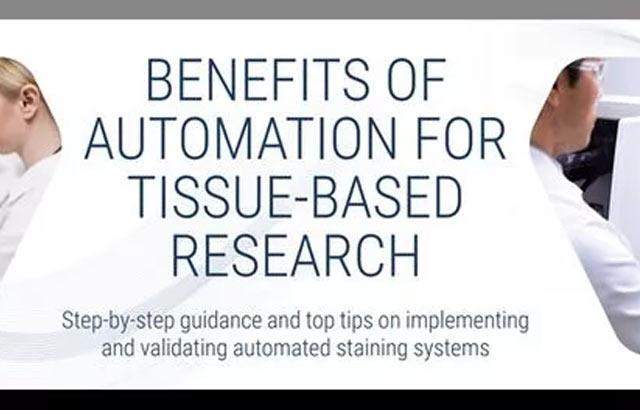Enhanced Automated Multiplex Capabilities on Leica Biosystems BOND Research System


There is an ever-increasing demand to derive more information from limited samples. Multiplex staining provides a means of visualizing many targets in a single tissue section, with the ability to accurately resolve spatial relationships between targets. It is a vital tool in establishing expression profiles of immune checkpoint markers in the tumor microenvironment. Multiplex staining has historically been a long process, and when done manually is generally performed over 2 or more days, depending on the number of markers and chromogen combinations used. Automated chromogenic multiplexing applications have largely been limited to 2- or 3-plex stains and to conduct more than 3-plex had required a combination of manual steps (e.g. pre-mixing chromogens) incorporated with several processing runs on the instrument. As a result, these workflow inefficiencies often hindered optimal assay design and staining quality.
The Leica Biosystems BOND research system capabilities have been expanded to further support the need for automating chromogenic multiplexing in tissue. Discover how the new features and assays combine to support automated 6-plex chromogenic multiplexing
Learning Objectives
- Discover the multiplex capabilities of Leica Biosystems BOND research system and how it supports chromogenic and fluorescent multiplexing
- Learn how to utilize the new features of research BOND software to support multiplexing
- Review optimized examples of how to automate 6-color chromogenic multiplexing on BOND research system
About the presenters

Damian is the Global Product Manager for the clinical and research BOND systems and is based in Melbourne, Australia. Damian joined Leica Biosystems as a Scientist in 2007 working on the development of BOND-III. Throughout his career at Leica Biosystems he has held numerous roles working across the broad portfolio of Leica Biosystems products, included spending 7 years based out of the Newcastle UK site before returning to Australia in 2018.

Dean joined Leica Biosystems in 2016 and is a senior scientist in the R&D team in Melbourne, working on advanced staining projects. He graduated from Monash University where he pursued a PhD, with the department of Immunology and Pathology. During this time, he investigated the role of T cell lineages in mediating inflammatory retinal disorders. He assessed cellular interactions using fluorescent multiplex IHC with confocal microscopy imaging of retinal whole mounts.
Related Content
Leica Biosystems content is subject to the Leica Biosystems website terms of use, available at: Legal Notice. The content, including webinars, training presentations and related materials is intended to provide general information regarding particular subjects of interest to health care professionals and is not intended to be, and should not be construed as, medical, regulatory or legal advice. The views and opinions expressed in any third-party content reflect the personal views and opinions of the speaker(s)/author(s) and do not necessarily represent or reflect the views or opinions of Leica Biosystems, its employees or agents. Any links contained in the content which provides access to third party resources or content is provided for convenience only.
For the use of any product, the applicable product documentation, including information guides, inserts and operation manuals should be consulted.
Copyright © 2024 Leica Biosystems division of Leica Microsystems, Inc. and its Leica Biosystems affiliates. All rights reserved. LEICA and the Leica Logo are registered trademarks of Leica Microsystems IR GmbH.



